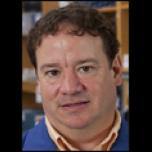Past Webinar
Grasping the Shadow Force: Immune Cells in ALS
Quick Links
Introduction
When two biological networks as complex as the nervous and immune systems cross paths, you know the interaction is not going to be simple. Add in neurodegeneration—such as amyotrophic lateral sclerosis—and it creates a web that will take many scientists to untangle. Some parts of the immune response appear to fight the disease, others may make it worse, and still other elements seem to have no effect either way.
On 12 May 2011, Alzforum hosted a Webinar discussion by eight scientists who are not only working to decipher the neural-immune connection in ALS, but also using what they learn toward treating the disease. Steve Perrin of the ALS Therapy Development Institute (ALS TDI) in Cambridge, Massachusetts, led off and was joined by panelists Stanley Appel of The Methodist Neurological Institute in Houston, Texas; Isaac Chiu of Harvard Medical School; and Michal Schwartz of the Weizmann Institute of Science in Rehovot, Israel. Mariko Howe of Stanford University in Palo Alto, California, John Lincecum of ALS TDI, Beth Stevens of Children's Hospital, Boston, and Fernando Vieira of ALS TDI shared their expertise for discussion as well.
- Listen to the Webinar
Background
Background Text
By Amber Dance
Much about the manner in which amyotrophic lateral sclerosis arises and kills motor neurons remains unclear. Scientists are pursuing a variety of possible players ranging from glia, mitochondria, and glutamate receptors to RNA metabolism, protein aggregation, and axonal transport. Yet one of the most promising—and perhaps surprising—targets to date appears to be the immune system and its complex interactions with motor neurons. So says the ALS Therapy Development Institute (ALS TDI), a nonprofit biotechnology company in Cambridge, Massachusetts. In 2009, the organization announced that after examining nearly 500 different biological pathways, it was homing in on the immune system’s co-stimulatory pathway as a druggable interaction (see ARF related news story on Lincecum et al., 2010). Compounds that block the interaction between CD40 and its receptor cut off the co-stimulatory communication between macrophages and T cells and thus dampen inflammation.
The work by the ALS TDI, and many other researchers, suggests that in ALS, some of the most important players are immune cells that can inflame and damage motor neurons. Steve Perrin of the ALS TDI will lead this Webinar on the topic, which has come into vogue in recent years. His work suggests that turning off immunity is a good treatment, but immune cells, of course, also have a normal, protective role. What, exactly, are these cells doing in ALS—both locally and systemically? Do they help, hurt, or both? Do they cause pathology or protect cells—or are they merely a sideshow to the main events? Unfortunately for those who like things clear cut, the final answers to those questions are likely to be anything but simple.
What do scientists know so far? Scientists generally believe that the central nervous system is immuno-privileged, meaning immune cells and antibodies stay on the blood side of the blood-brain barrier. However, the barrier can weaken during disease, allowing macrophages and T cells from the bloodstream to swarm in and mingle with microglia—the nervous system’s resident immune cells—around sites of damage. Human studies suggest that immune responses get activated in people with ALS, although the nature of their activity is far from clear (see ARF related news story). For example, in ALS patients, monocytes and macrophages are activated, and the degree of activation rises proportionally with the progression of symptoms (Zhang et al., 2005). In addition, the proportions of different T cell populations are altered in people with ALS—naïve T cell levels are reduced, while memory T cell numbers are increased, compared to healthy people (Banerjee et al., 2008). And yet, other parts of the immune system’s activity appear to be dampened. Michal Schwartz, of the Weizmann Institute of Science in Rehovot, Israel, and colleagues have found that people with ALS also have reduced function in the thymus, which produces immune T cells (Seksenyan et al., 2009).
Work in mouse models of ALS, primarily those driven by mutant superoxide dismutase 1 (SOD1), hints that immune cells can be protective. Stanley Appel of The Methodist Neurological Institute in Houston, Texas, and colleagues found that a subset of CD4+ T cells support ailing neurons. Mice lacking this T cell population died sooner, but a bone marrow transplant returned their disease course to normal (see ARF related news story on Beers et al., 2008). Isaac Chiu and colleagues at Harvard Medical School have found that T cells infiltrate the spinal cord of ALS mice, where they upregulate protective factors such as IGF-1. As in Appel’s work, Chiu observed that T cell ablation worsened disease (Chiu et al., 2008). Macrophages are activated even before symptoms of neurodegeneration appear, and extend into peripheral nerves as disease progresses (see ARF related news story on Chiu et al., 2009).
However, scientists still have but a vague understanding of the interplay between immune cells and neurons in ALS. It is not known whether a common factor, such as mutant SOD1, compromises both immune and nerve cells, or whether nerve degeneration happens first and exhausts the immune system’s resources. Immune activity might even cause symptoms of ALS as inflammation generates free radicals that could damage neurons (reviewed in Henkel et al., 2009 and McGeer and McGeer, 2002). In one mouse study, treatment with macrophage colony stimulating factor actually sped up the pace of disease (Gowing et al., 2009). Facing such conflicting data, many scientists think the immune system has both positive and negative effects on ALS progression, complicating any therapeutic plans.
Incidentally, scientists are wrestling with the same issue in Alzheimer’s disease. There, microglia cluster around amyloid-β plaques (Naert and Rivest, 2011). One and the same inflammatory stimulus can improve one signature pathology while worsening the other, and more work needs to be done defining and distinguishing beneficial activation states from detrimental ones (e.g., see ARF conference story). Neuroinflammation also occurs in Parkinson’s disease. Clearly, a better understanding of the neural-immune crosstalk could have implications for a variety of neurodegenerative conditions (reviewed in Appel et al., 2009).
The interplay between the immune and the nervous systems extends even further, beyond neurodegenerative disease. Beth Stevens of Children's Hospital, Boston, has found that, during development, the immune-activating complement cascade is involved in eliminating unwanted synapses (reviewed in Schafer and Stevens, 2010). In earlier work in the lab of Ben Barres at Stanford University in Palo Alto, Stevens discovered that the complement pathway is upregulated in a mouse model of glaucoma, suggesting that the complement inappropriately marks synapses for destruction during disease (see ARF related news story on Stevens et al., 2007). More recently, Barres and colleagues have shown that endogenous antibodies promote debris clearance and axon regeneration following nerve injury (Vargas et al., 2010).
Another question that stumps ALS researchers is the role of glia, the group of cells that encompass microglia (see ARF related news story on Gowing et al., 2008; Henkel et al., 2009). Mariko Howe, in the Barres lab, is working to distinguish between resident microglia and the near-identical peripheral immune cells, which should help researchers better understand which cell type does what in the diseased brain.
In ALS mice, at least, one thing seems clear: ALS TDI’s CD40 blockers extend life, presumably by silencing the co-stimulatory pathway. Perrin and colleagues believe that when surveillance by monocytes is upregulated by some as-yet unknown antigen, the monocytes subsequently activate T cells, which in turn leads to an immune response that damages motor neurons. Blocking CD40 should prevent immunity from going overboard, and in this way, protect motor neurons, theorize Perrin and Fernando Vieira, ALS TDI’s director of in vivo operations. After completing further preclinical studies, the group is now in talks with commercial partners to start a clinical trial.
During this Webinar, our speakers shared new data and ideas on the role of immunity in ALS. We invite you to join in with your own theories, thoughts, and questions.
References
News Citations
- ALS-TDI Scours Transcriptome, Targets CD40L
- ALS: T Cells Step Up
- Survivor ALS Models—Immunity Protects Against Mutant SOD
- Peripheral Innate Immunity—Not So Peripheral to ALS?
- Barcelona: Inflammation—That Two-Faced Beast
- Paper Alert: Does the Complement Devour Synapses?
- Microglia in ALS: Helpful, Harmful, or Neutral?
Paper Citations
- Lincecum JM, Vieira FG, Wang MZ, Thompson K, De Zutter GS, Kidd J, Moreno A, Sanchez R, Carrion IJ, Levine BA, Al-Nakhala BM, Sullivan SM, Gill A, Perrin S. From transcriptome analysis to therapeutic anti-CD40L treatment in the SOD1 model of amyotrophic lateral sclerosis. Nat Genet. 2010 May;42(5):392-9. PubMed.
- Zhang R, Gascon R, Miller RG, Gelinas DF, Mass J, Hadlock K, Jin X, Reis J, Narvaez A, McGrath MS. Evidence for systemic immune system alterations in sporadic amyotrophic lateral sclerosis (sALS). J Neuroimmunol. 2005 Feb;159(1-2):215-24. PubMed.
- Banerjee R, Mosley RL, Reynolds AD, Dhar A, Jackson-Lewis V, Gordon PH, Przedborski S, Gendelman HE. Adaptive immune neuroprotection in G93A-SOD1 amyotrophic lateral sclerosis mice. PLoS One. 2008 Jul 23;3(7):e2740. PubMed.
- Seksenyan A, Ron-Harel N, Azoulay D, Cahalon L, Cardon M, Rogeri P, Ko MK, Weil M, Bulvik S, Rechavi G, Amariglio N, Konen E, Koronyo-Hamaoui M, Somech R, Schwartz M. Thymic involution, a co-morbidity factor in amyotrophic lateral sclerosis. J Cell Mol Med. 2010 Oct;14(10):2470-82. PubMed.
- Beers DR, Henkel JS, Zhao W, Wang J, Appel SH. CD4+ T cells support glial neuroprotection, slow disease progression, and modify glial morphology in an animal model of inherited ALS. Proc Natl Acad Sci U S A. 2008 Oct 7;105(40):15558-63. Epub 2008 Sep 22 PubMed.
- Chiu IM, Chen A, Zheng Y, Kosaras B, Tsiftsoglou SA, Vartanian TK, Brown RH Jr, Carroll MC. T lymphocytes potentiate endogenous neuroprotective inflammation in a mouse model of ALS. Proc Natl Acad Sci U S A. 2008 Nov 18;105(46):17913-8. Epub 2008 Nov 7 PubMed.
- Chiu IM, Phatnani H, Kuligowski M, Tapia JC, Carrasco MA, Zhang M, Maniatis T, Carroll MC. Activation of innate and humoral immunity in the peripheral nervous system of ALS transgenic mice. Proc Natl Acad Sci U S A. 2009 Dec 8;106(49):20960-5. PubMed.
- Henkel JS, Beers DR, Zhao W, Appel SH. Microglia in ALS: the good, the bad, and the resting. J Neuroimmune Pharmacol. 2009 Dec;4(4):389-98. PubMed.
- McGeer PL, McGeer EG. Inflammatory processes in amyotrophic lateral sclerosis. Muscle Nerve. 2002 Oct;26(4):459-70. PubMed.
- Gowing G, Lalancette-Hébert M, Audet JN, Dequen F, Julien JP. Macrophage colony stimulating factor (M-CSF) exacerbates ALS disease in a mouse model through altered responses of microglia expressing mutant superoxide dismutase. Exp Neurol. 2009 Dec;220(2):267-75. PubMed.
- Naert G, Rivest S. The role of microglial cell subsets in Alzheimer's disease. Curr Alzheimer Res. 2011 Mar;8(2):151-5. PubMed.
- Appel SH, Beers DR, Henkel JS. T cell-microglial dialogue in Parkinson's disease and amyotrophic lateral sclerosis: are we listening?. Trends Immunol. 2010 Jan;31(1):7-17. PubMed.
- Schafer DP, Stevens B. Synapse elimination during development and disease: immune molecules take centre stage. Biochem Soc Trans. 2010 Apr;38(2):476-81. PubMed.
- Stevens B, Allen NJ, Vazquez LE, Howell GR, Christopherson KS, Nouri N, Micheva KD, Mehalow AK, Huberman AD, Stafford B, Sher A, Litke AM, Lambris JD, Smith SJ, John SW, Barres BA. The classical complement cascade mediates CNS synapse elimination. Cell. 2007 Dec 14;131(6):1164-78. PubMed.
- Vargas ME, Watanabe J, Singh SJ, Robinson WH, Barres BA. Endogenous antibodies promote rapid myelin clearance and effective axon regeneration after nerve injury. Proc Natl Acad Sci U S A. 2010 Jun 29;107(26):11993-8. PubMed.
- Gowing G, Philips T, Van Wijmeersch B, Audet JN, Dewil M, Van Den Bosch L, Billiau AD, Robberecht W, Julien JP. Ablation of proliferating microglia does not affect motor neuron degeneration in amyotrophic lateral sclerosis caused by mutant superoxide dismutase. J Neurosci. 2008 Oct 8;28(41):10234-44. PubMed.
External Citations
Further Reading
Papers
- Shi N, Pardridge WM. Noninvasive gene targeting to the brain. Proc Natl Acad Sci U S A. 2000 Jun 20;97(13):7567-72. PubMed.
Panelists
-
 Steven Perrin, Ph.D.
ALS Therapy Development Institute (ALS TDI)
Steven Perrin, Ph.D.
ALS Therapy Development Institute (ALS TDI)
-
 Stanley H. Appel, M.D.
Methodist Neurological Institute
Stanley H. Appel, M.D.
Methodist Neurological Institute
-
 Isaac Chiu
Harvard Medical School; Children's Hospital Boston
Isaac Chiu
Harvard Medical School; Children's Hospital Boston
-
 Mariko Bennett
Stanford University
Mariko Bennett
Stanford University
-
 John Lincecum, Ph.D.
ALS Therapy Development Institute (ALS TDI)
John Lincecum, Ph.D.
ALS Therapy Development Institute (ALS TDI)
-
 Michal Schwartz, Ph.D.
Weizmann Institute of Science
Michal Schwartz, Ph.D.
Weizmann Institute of Science
-
 Beth Stevens, Ph.D.
Children's Hospital
Beth Stevens, Ph.D.
Children's Hospital
-
 Fernando Vieira, M.D.
ALS Therapy Development Institute (ALS TDI)
Fernando Vieira, M.D.
ALS Therapy Development Institute (ALS TDI)

Comments
Centers for Disease Control and Prevention
In a comment to a recent Alzforum Webinar (1), I outlined a novel, unifying scenario on the etiology of neurodegenerative disorders proposing that APP/Aβ, α-synuclein, tau, huntingtin, TDP-43, prion protein, and other proteins implicated in these disorders are members of the innate immune system, and that their “malfunction” leads to a wide range of autoimmune diseases, including AD, PD, HD, ALS, FTLD-U, and CJD (2,3). It is fortunate to have within such a short period the opportunity to comment on another Webinar, which specifically addresses the participation of the immune system in ALS.
Similar to the results of several genomewide association studies that implicate the immune system in the etiology of AD (4,5), it appears that at least some forms of ALS (e.g., those associated with SOD1 mutations) involve multiple overlapping innate and adaptive immune pathways, including one responsible for “co-stimulatory regulation of the adaptive and innate immune systems” (6). A major strength of the study by Lincecum et al. is the finding that a therapeutic monoclonal antibody specific for one of the T cell receptors involved in the co-stimulatory pathway, the CD40L, slows the progression of ALS in a mouse model (6). Interestingly, the anti-CD40L therapy has been previously shown to be effective in preclinical models of allograft transplants and autoimmune diseases, which is consistent with the hypothesis that blocking CD40L signaling delays the activation of the immune system and reduces the neuroinflammation implicated in ALS (reviewed in 6).
The ALS-SOD1 model proposed by Lincecum et al. is that, “During the symptomatic phase of the disease and throughout disease progression, unknown antigens amplify the immune surveillance, resulting in a deleterious immune response and ultimately central neuroinflammation and motor neuron degeneration” (6). Another highly significant aspect of this model is that “ALS pathophysiology is initiated or propagated in the periphery, and that the motor neuron axon is the target of a pathological autoimmune response during disease progression” (6). Clearly, this ALS model is consistent within the new unifying scenario on the etiology of all these neurodegenerative diseases as autoimmune diseases. However, the major paradigm shift promoted by this unifying scenario is that the key process that drives these autoimmune diseases is the assembly of specific innate immune proteins (e.g., APP/Aβ, Aα-synuclein, tau, huntingtin, and prion protein) into aberrant oligomeric species, or “pathogen-like immune complexes” (PICs) that structurally or functionally resemble components or activities of foreign infectious pathogens, which leads to a vicious autoimmune cycle (VAC), to cellular death, and to neurodegeneration and diseases.
To specifically integrate the ALS model advanced by Lincecum et al. in the unifying scenario, I propose that the “unknown antigens” that lead to the amplification of the immune surveillance, deleterious immune response, neuroinflammation, and motor neuron degeneration in ALS are the PICs. The obvious ALS-associated protein candidates for PICs are SOD1, TDP-43, and FUS, all of which can assemble into oligomeric species and are primary components of the ALS-associated cytoplasmic inclusions (6-8). Are any of these proteins members of the innate immune system?
Unlike other proteins implicated in neurodegenerative diseases, such as the APP/Aβ, α-synuclein, tau, huntingtin, and prion protein, whose functions have not been established despite decades of intense research, the “functions” of SOD1, TDP-43, and FUS are partially known: SOD1 is a superoxide dismutase, and TDP-43 and FUS are nucleic acid binding proteins. Interestingly, all three proteins are involved in stress-associated events, and, indeed, few biological factors or processes are more stressful than coping with infectious agents, particularly viruses, which have been the major drivers of cellular evolution (9,10). Of note, TDP-43 and FUS are intimately associated with cellular stress granules and processing bodies; clearly, this phenomenon is compatible and suggestive of a role of these proteins in innate immunity by binding to viral nucleic acids. Indeed, TDP-43 was identified as a HIV TAR DNA binding protein. Coincidentally, another cellular protein that was identified in a similar way, the TAR-binding protein (TRBP), together with Dicer and Ago2 proteins, forms the basic RNA-inducible silencing complex (RISC), which has evolved primarily as part of the innate immune system (11,12). Very interestingly, as discussed in detail elsewhere (2), the gene coding for the prion protein codes also for TAR-like elements, which might be implicated in the innate immune system. Finally, there is evidence that both TDP-43 and FUS interact specifically with Drosha (reviewed in 10), another RNase enzyme that is involved in RISC and innate immunity.
One of the major tenets of the novel unifying scenario is that the PICs can originate anywhere in the body where these specific innate immunity proteins are expressed, and that these PICs can circulate among cells, tissues, and (more rarely) among individuals. Thus, presumably, VAC occurs in many tissues, although due to normal cellular turnover, it is less evident as compared to central nervous system or to other tissues containing long-lived, post-mitotic cells. Also, it is expected that PICs (and VAC) stimulate not only other members of the innate immune system, but also components of the adaptive immune system, such as T cells, particularly in tissues to which these cells have wider access.
As previously stated (1,2), the overall strength of this unifying scenario is that it is consistent with, and integrates and explains, much of the existing data and observations, and makes biological and evolutionary sense. Although any potential ALS therapeutic breakthrough is welcomed news, there is ample evidence from decades of sustained research in these highly important medical and public health fields, that without fully understanding the etiology of these neurological disorders, it would be difficult to prevent and control them.
See also:
Comment by Claudiu Bandea on: LIVE DISCUSSION: Reimagining Alzheimer's Disease—Time for Bright New Ideas? Accessed 26 Apr 2011.
Bandea C. Comment to paper by Sandberg et al. Prion propagation and toxicity in vivo occur in two distinct mechanistic phases, Nature 2011; 470:450-452.
Bandea, CI. The Origin and Evolution of Viruses as Molecular Organisms, 2009. Available from Nature Precedings.
References:
Bandea C. Endogenous Viral Etiology of Prion Diseases. Nature Precedings, 2009 Oct 23.
Jones L, Holmans PA, Hamshere ML, Harold D, Moskvina V, Ivanov D, Pocklington A, Abraham R, Hollingworth P, Sims R, Gerrish A, Pahwa JS, Jones N, Stretton A, Morgan AR, Lovestone S, Powell J, Proitsi P, Lupton MK, Brayne C, Rubinsztein DC, Gill M, Lawlor B, Lynch A, Morgan K, Brown KS, Passmore PA, Craig D, McGuinness B, Todd S, Holmes C, Mann D, Smith AD, Love S, Kehoe PG, Mead S, Fox N, Rossor M, Collinge J, Maier W, Jessen F, Schürmann B, Heun R, Kölsch H, van den Bussche H, Heuser I, Peters O, Kornhuber J, Wiltfang J, Dichgans M, Frölich L, Hampel H, Hüll M, Rujescu D, Goate AM, Kauwe JS, Cruchaga C, Nowotny P, Morris JC, Mayo K, Livingston G, Bass NJ, Gurling H, McQuillin A, Gwilliam R, Deloukas P, Al-Chalabi A, Shaw CE, Singleton AB, Guerreiro R, Mühleisen TW, Nöthen MM, Moebus S, Jöckel KH, Klopp N, Wichmann HE, Rüther E, Carrasquillo MM, Pankratz VS, Younkin SG, Hardy J, O'Donovan MC, Owen MJ, Williams J. Genetic evidence implicates the immune system and cholesterol metabolism in the aetiology of Alzheimer's disease. PLoS One. 2010;5(11):e13950. PubMed.
Belbin O, Carrasquillo MM, Crump M, Culley OJ, Hunter TA, Ma L, Bisceglio G, Zou F, Allen M, Dickson DW, Graff-Radford NR, Petersen RC, Morgan K, Younkin SG. Investigation of 15 of the top candidate genes for late-onset Alzheimer's disease. Hum Genet. 2011 Mar;129(3):273-82. PubMed.
Lincecum JM, Vieira FG, Wang MZ, Thompson K, De Zutter GS, Kidd J, Moreno A, Sanchez R, Carrion IJ, Levine BA, Al-Nakhala BM, Sullivan SM, Gill A, Perrin S. From transcriptome analysis to therapeutic anti-CD40L treatment in the SOD1 model of amyotrophic lateral sclerosis. Nat Genet. 2010 May;42(5):392-9. PubMed.
Lagier-Tourenne C, Polymenidou M, Cleveland DW. TDP-43 and FUS/TLS: emerging roles in RNA processing and neurodegeneration. Hum Mol Genet. 2010 Apr 15;19(R1):R46-64. PubMed.
Lanson NA, Maltare A, King H, Smith R, Kim JH, Taylor JP, Lloyd TE, Pandey UB. A Drosophila model of FUS-related neurodegeneration reveals genetic interaction between FUS and TDP-43. Hum Mol Genet. 2011 Jul 1;20(13):2510-23. PubMed.
Bandea C. A Unifying Scenario on the Origin and Evolution of Cellular and Viral Domains. Nature Precedings. 2009 Dec 23,
Seth RB, Sun L, Chen ZJ. Antiviral innate immunity pathways. Cell Res. 2006 Feb;16(2):141-7. PubMed.
Obbard DJ, Gordon KH, Buck AH, Jiggins FM. The evolution of RNAi as a defence against viruses and transposable elements. Philos Trans R Soc Lond B Biol Sci. 2009 Jan 12;364(1513):99-115. PubMed.
Musarò A. State of the art and the dark side of amyotrophic lateral sclerosis. World J Biol Chem. 2010 May 26;1(5):62-8. PubMed.
Make a Comment
To make a comment you must login or register.